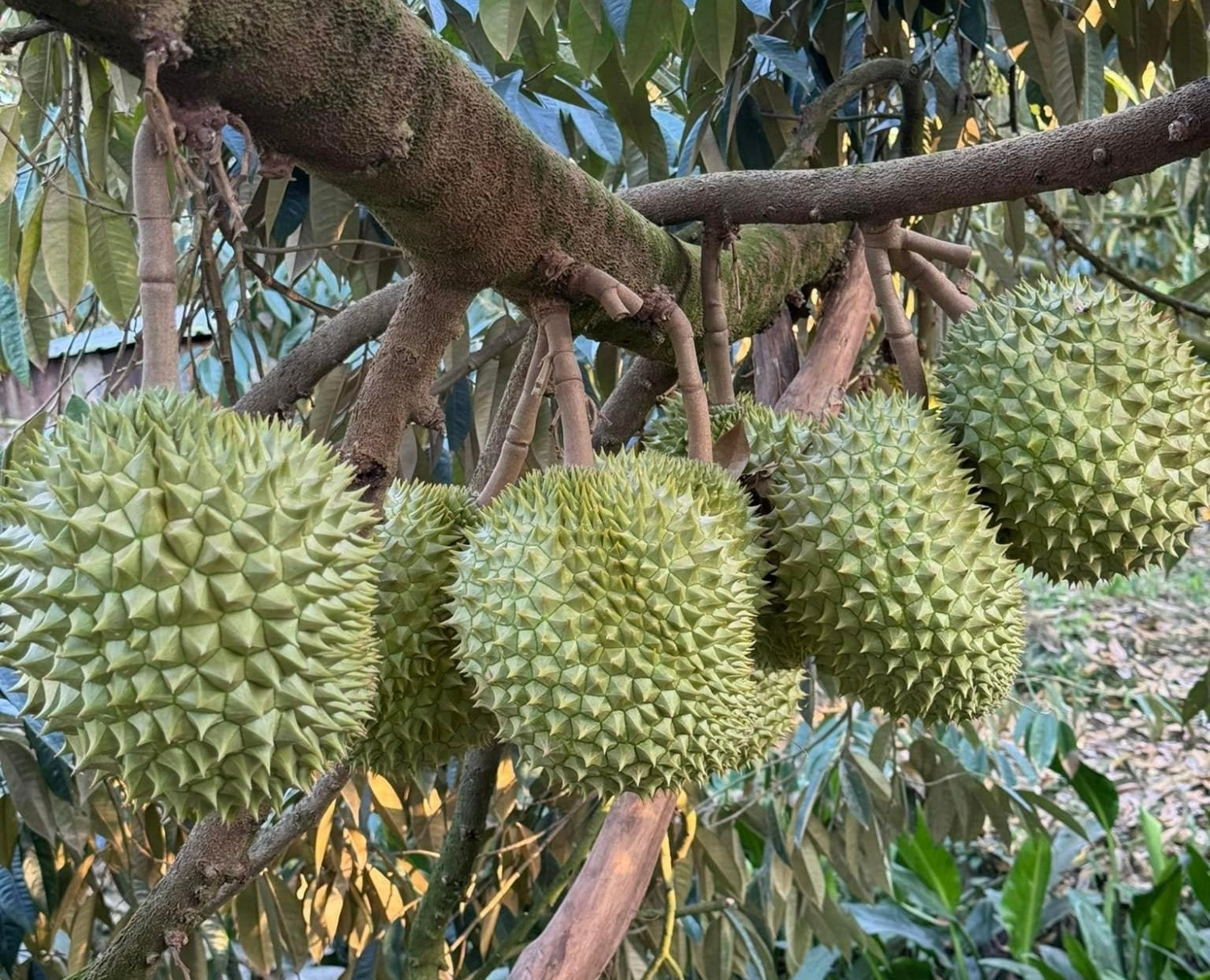
China continued to be the world's largest consumer of durian in the world (91 percent). With Chinese consumers’ “durian with everything” formula, China is a vast market for durian growers and has been expanding, expecting to reach the $10 billion peak soon.
China’s durian imports have increased rapidly in recent years. The country has opened its market to many exporters, including Vietnam, the Philippines and Malaysia. The race to export durian to China has heated up as Thailand, which once dominated the market, is facing stiffer competition, especially from Vietnam.
Since mid-2022, Vietnam's durian export value to the multibillion-consumer market has increased sharply after a protocol was signed between Vietnam and China from $421 million in 2022 to $2.24 billion the next year. In 2024, Vietnam earned $3.3 billion from durian exports, and 90 percent of the turnover was from China.
Vietnam’s durian market share in China has increased rapidly, from 5 percent in 2022 to 35 percent in 2023.
In the first 11 months of 2024, Vietnam’s durian accounted for 47.09 percent of China’s total durian imports, just a little lower than Thailand’s 52.03 percent.
Meanwhile, in 2024, Thailand only exported 860,000 tons of durian to China, a decrease of 13 percent from the 990,000 tons in 2023, which led the export value drop from $4.12 billion to $3.75 billion.
Thai officials have warned that Thailand’s durian may continue facing challenges in the time to come as Vietnam’s durian exports have increased rapidly. They predicted that Vietnam’s durian exports may be equal to Thailand’s in just one or two years.
In fact, when Vietnam signed the protocol on exporting durian through official channels to China, Thai mass media and experts gave warnings about the strong rise of Vietnam in the Chinese market.
To retain its Chinese market share, Thai agencies have not only raised the quality standards of exported durian but also have promoted rail transport to reduce time and costs while enhancing the fruit's freshness.
Recently, when Chinese customs found Thai durian containing yellow dye and began imposing stringent checks, the Thai Government office issued a warning that trust in Thailand's premier fruit is being shaken.
The head of Thailand's agricultural sector has launched a nationwide campaign called "Set Zero" which aims to produce safe and high-quality fruits for domestic consumption and export.
Several strong measures are being implemented, such as inspecting all exported durian containers and testing for cadmium residue at China's request. Violations are swiftly addressed, and prosecutions are possible.
With this campaign, Thailand aims to restore consumer confidence in the quality of its products and maintain its market share in China.
Vietnam’s durian exports to China have been affected by the discovery of Auramine O residue on Thai durian. Many container trucks carrying Vietnam’s durian to China have been forced to be redirected to be consumed in the domestic market at surprisingly low prices of VND40,000-50,000 per kilogram.
Vietnam has taken action to certify and ensure the safety of durian exported to China. A representative of the Plant Protection Department under the Ministry of Agriculture and Rural Development (MARD) said there are 9 yellow dye testing centers in Vietnam certified by a Chinese customs agency; consignments of durian meeting requirements have customs clearance to enter the Chinese market.
Following success in fresh durian exports, Vietnam and China have signed a protocol on exporting Vietnam’s frozen durian to China.
MARD has predicted that the durian growing area in Vietnam will increase to 160,000 hectares in 2025 which can have an output of 1.55 million tons. As such, durian supply continues to increase.
However, experts say that there is no need to worry about oversupply, because less than one percent of Chinese buy durian.
They said Vietnam needs to develop durian farming in a more methodical way by standardizing every link of the durian value chain, including growing areas' coding, packaging facilities, durian quality and promotion of brands.
Nguyen Thanh Binh, Chair of the Vietnam Fruit and Vegetable Association, has suggested that MARD set national standards for durian and other key fruits and vegetables.
Binh said that quality standards provide a common framework for production, harvesting, and processing. This serves as a foundation for ministries to confidently negotiate market access while allowing businesses to retain their export markets.
Tam An